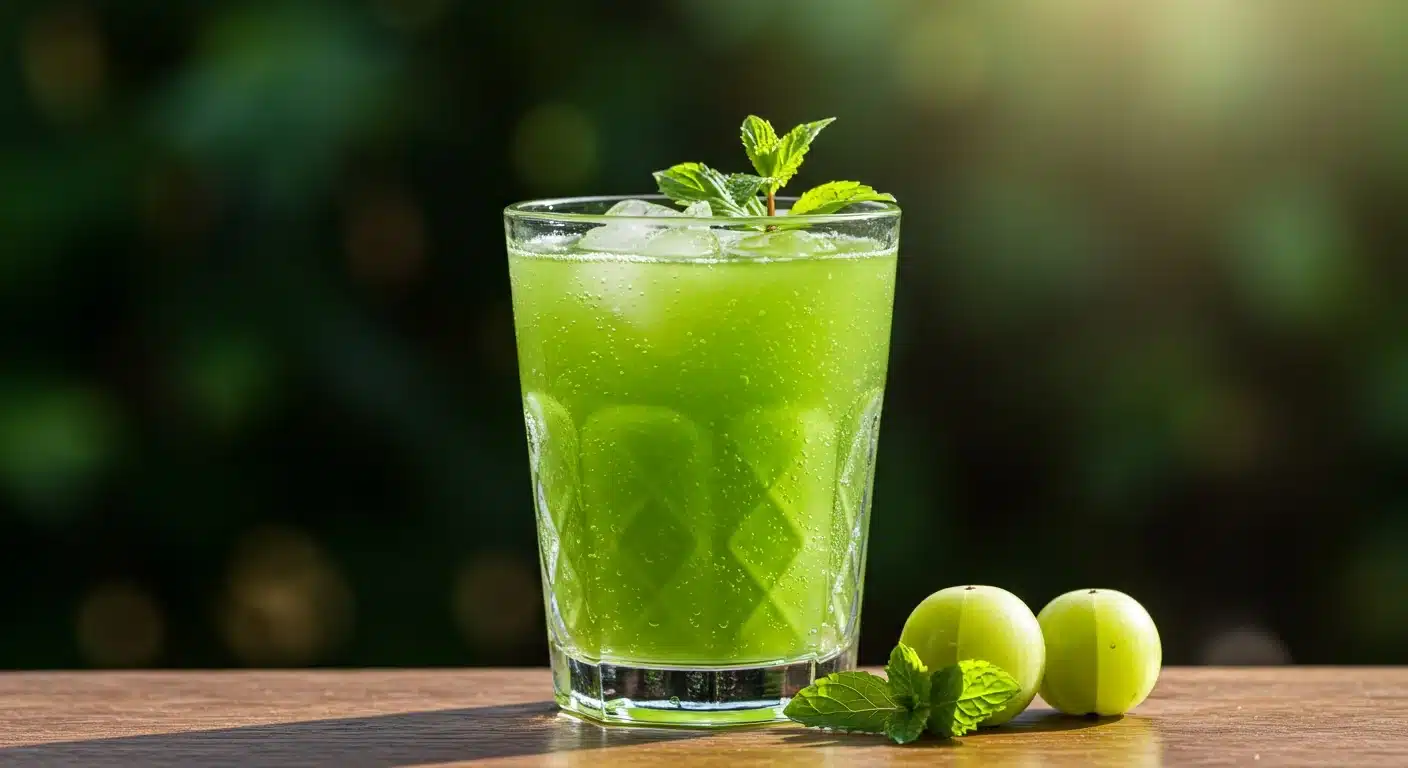
Educational content only. Not medical advice.
Amla juice—pressed or blended from the fruit of Phyllanthus emblica (Indian gooseberry)—shows up in many wellness routines focused on digestion, steady energy, and feeling lighter. Below is a practical, non‑medical guide to how people use it, what to expect, and how to make it part of a balanced plan.
Does Amla juice help with weight loss?
- Set expectations: Modern research generally discusses Amla for metabolic support (e.g., lipids/glucose) in the context of diet and lifestyle—not as a stand‑alone fat‑loss solution. Outcomes vary by person, product, and routine.
- Where it can fit: A tart, low‑calorie drink can replace sugary beverages, promote hydration, and cue mindful meals. Consistent food quality (protein + fiber), sleep, and movement usually move the needle more than any single ingredient.
Typical amounts & timing
- Daily amount: Many people use 2–4 oz (60–120 mL) of Amla juice diluted in water, once daily. Start small for taste and stomach tolerance, then adjust per label.
- Timing: Morning or pre‑lunch is common. The best time is the time you’ll consistently keep.
- With food: If sour drinks bother your stomach, take it with a snack or meal.
How to prepare (three easy options)
1) Ready‑to‑drink juice Choose clean‑label products (no artificial colors). Refrigerate after opening. Dilute to taste and sip slowly.
2) Concentrate + water Follow the label’s dilution (e.g., 1 Tbsp concentrate to 8–10 oz water). Add ice and a squeeze of lemon.
3) DIY from fruit or powder
- Fresh fruit: Blend pitted Amla with cold water; strain for smoothness; sweeten lightly if desired.
- Powder: Whisk ½ tsp Amla powder into 8–10 oz water; add ginger or mint.
Flavor pairings & swaps
- Ginger or mint to soften tartness
- Lemon/lime for brightness
- Electrolyte pinch (salt) in hot weather
- Light sweetener if needed (or a small amount of honey)
How to use it in a weight‑management routine
- Meal anchors: Pair your juice with a protein‑ and fiber‑rich meal (e.g., Greek yogurt + berries; eggs + greens; lentil bowl).
- Hydration cue: Use the juice as your pre‑meal hydration habit instead of a sugary drink.
- Move a little: A 10–20‑minute walk after meals supports post‑meal comfort for many people.
Powder vs extract vs juice
- Juice: Fast and palatable when diluted; easy daily habit.
- Powder: Versatile for smoothies/tea; shelf‑stable; typically larger servings for comparable effect.
- Extract: Smaller servings; standardized actives; follow label closely.
Safety & who should avoid it
- Generally well tolerated; sour stomach can occur—dilute and take with food.
- If you use medications affecting blood sugar or clotting, consult your clinician.
- Many people pause herbal products 1–2 weeks before elective procedures per clinician guidance.
- Insufficient data in pregnancy/breastfeeding.
Quick FAQs
Is store‑bought okay? Yes—look for short ingredient lists and refrigeration after opening. How long to notice anything? Routines vary; allow 2–4 weeks alongside diet and movement. Can I make it sweeter? Use small amounts of honey or fruit; avoid large sugar additions if weight management is the goal.
Related Reading
Masterful Display
Each and everyone of our products are deeply considered, labored over, and improved upon time and time again. We invite you to experience the difference of our carefully crafted small batches of herbal support items. Whether it be our tea line, produced for a delightful experience, or our tincture blends and extracts, we have what you need.

